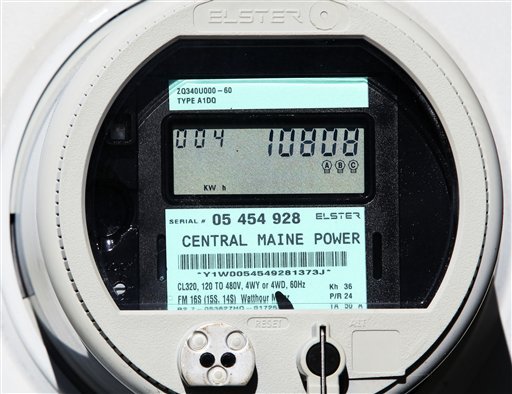Any time people face the prospect of paying more for one of life’s necessities, they notice — so a proposal by Maine’s largest electric utility to raise its rates is naturally drawing attention.
Central Maine Power Co. is calling on the state to approve a rate plan that would run from 2014 to 2019 and add about $2 to the average monthly home bill of $73.23.
The utility says it needs the money to improve the reliability of its distribution system, replace its 1970s-era billing system and further implement technology that expands pricing options based on when consumers use electricity and what they use it for.
The proposal now goes to the Maine Public Utilities Commission, which should take into account not only the facts and figures presented by the utility but also the potential impact on consumers.
CMP says part of the revenue from the rate hike will go toward a program presented as a cost-cutting measure. The time-of-use plan, implemented by CMP in March, offers lower rates to people who use energy-devouring devices such as dishwashers and dryers at night, when there’s less demand.
CMP doesn’t have figures yet on the impact of its time-of-use plan. Similar programs have worked elsewhere — off-peak customers in a 2009 Connecticut pilot program saved an average of $15 over three months compared to people on the usual flat-rate plan. But about 30 percent actually saw higher bills than they would have had on a flat-rate plan. So off-peak pricing is no magic bullet.
The PUC also should keep in mind the impact a struggling economy has on consumers’ ability to pay for electricity. In 2011, CMP shut off electricity to a record 29,554 households where customers didn’t pay their bills.
People who had lost their jobs or had low-paying jobs were turning to electric space heaters when oil prices soared, then found themselves in arrears in the spring, after the end of the winter moratorium on disconnecting power.
Granted, CMP isn’t the only player on the field when it comes to electricity costs. The utility oversees the power lines that deliver electricity to our homes, but it has no control over energy costs, which make up the biggest share of our monthly bills.
These costs fluctuate with the wholesale price of natural gas. This is good for consumers when natural gas prices are at historic lows, as they are now, but could be problematic when they rise again — especially if consumers are locked into a five-year increase in CMP’s distribution rate.
As the PUC weighs CMP’s rate request, the utility’s ability to deliver service in a reliable manner must be part of the equation, but so should consumers’ ability to pay higher rates over the duration of the rate plan. It’s at times like this that Maine residents rely on independent, informed officials to act in their best interest.
Send questions/comments to the editors.



Success. Please wait for the page to reload. If the page does not reload within 5 seconds, please refresh the page.
Enter your email and password to access comments.
Hi, to comment on stories you must . This profile is in addition to your subscription and website login.
Already have a commenting profile? .
Invalid username/password.
Please check your email to confirm and complete your registration.
Only subscribers are eligible to post comments. Please subscribe or login first for digital access. Here’s why.
Use the form below to reset your password. When you've submitted your account email, we will send an email with a reset code.